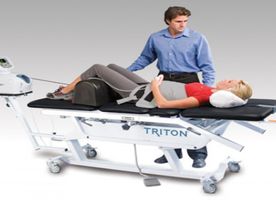Physical Medicine and Rehabilitation in Siegburg
Search and Compare the Best Clinics and Doctors at the Lowest Prices for Physical Medicine and Rehabilitation in Siegburg
HELIOS Hospital Siegburg












































































































































No Time?
Tell us what you're looking for and we'll reach out to the top clinics all at once







Physical medicine and rehabilitation (PM&R), also called physiatry, is a medical specialty that aims to enhance and restore the functional ability to a person who has been disabled as a result of an injury, disease, or disorder. The main goal is to help patients become as functional and pain-free as possible, as well as to help them enjoy their lives as fully as possible.
A physician who has completed training in physiatry is known as a physiatrist. They will assess and assure that their patients are medically stable to participate in therapies. A variety of disorders and diseases can be managed by physiatrists, particularly conditions of the joints, muscles, bones, and central or peripheral nervous system that affect a person’s ability to function. However, many physiatrists also specialize. While physiatrists do not perform surgery, they are qualified to perform numerous diagnostic tests and treatments. Some of the most common procedures they can do are as follows:
- Physical examinations
- Imaging studies
- Therapeutic exercise
- Nerve conduction studies (NCS)
- Electromyography (EMG)
- Peripheral joint injections
- Fluoroscopy guided procedures
- Musculoskeletal ultrasound
- Trigger point injections
- Spasticity management
- Interventional spinal therapeutics.
In some cases, physiatrists may also perform acupuncture, platelet-rich plasma injections, prolotherapy, and autologous stem cell treatments. They can also prescribe specific exercise programs, as well as assistive and adaptive equipment, such as prescribing proper orthoses. They are trained to lead and coordinate care with the rehabilitation team, including, but not limited to, physical therapy, recreational therapy, occupational therapy, internal medicine, and psychiatry.
How Long Should I Stay in Siegburg?
Since the treatment plan is designed specifically for the individual needs of the patient, the length of stay in Siegburg can be different for each person. For some diseases and disorders, such as stroke and chronic pain, a two to four weeks stay may be needed. During your stay, you may need to see your physiatrist 5 to 6 days a week at most.
What's the Expected Recovery Time?
There is usually no recovery time after you finish your treatment program, though you may be asked to gradually increase your activity level over time. However, this can be different depending on the condition, injury, disease, or disorder you have. Your physiatrist will give you a detailed recovery timeline, including when you can return to your normal routine.
What Aftercare is Required?
You will most likely be given specific instructions on how to care for yourself, speed up your recovery process, and avoid further complications. If you are given an exercise program to carry out at home, make sure to do this as directed. For some diseases or disorders, regular checkups may be needed. You can usually choose to do the checkups with your local doctor in your home country if you prefer.
What's the Success Rate?
Due to the comprehensive nature of their training and the broad spectrum of conditions treated, physiatrists can design and adapt to new technologies. This means that, with continuous research and advancement of physical medicine and rehabilitation, the treatment program is now safer and more successful than ever.
Are there Alternatives?
The alternatives to physical medicine and rehabilitation depend on your disorder, disease, or injury. In most cases, there is no other alternative than to see a physiatrist to help you recover. However, for some conditions, such as back pain, you may be able to see other medical professionals, such as chiropractors. Still, ensure you consult with your doctor beforehand.
This information has been accurately sourced and verified by a medical professional for its accuracy, however, we strongly recommend you to consult with your doctor before pursuing medical procedures overseas.





















